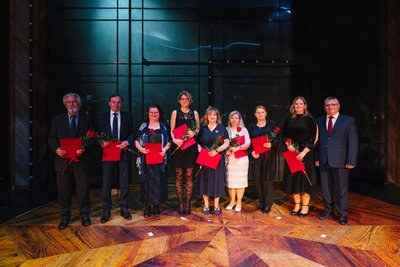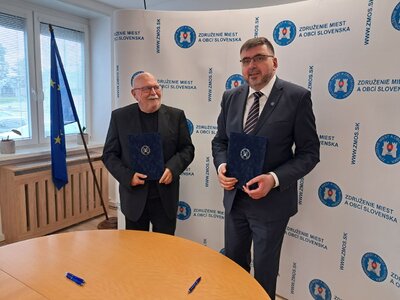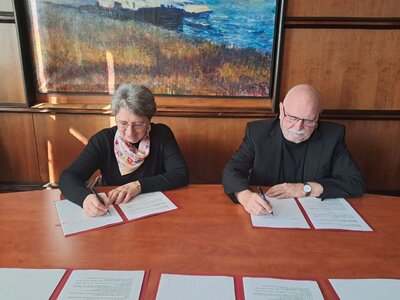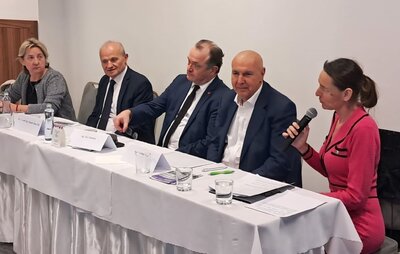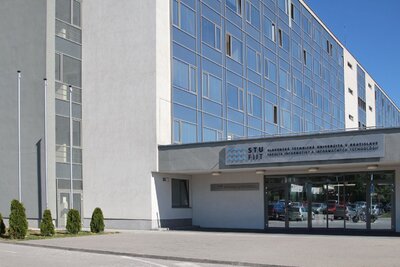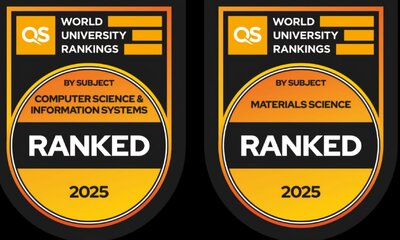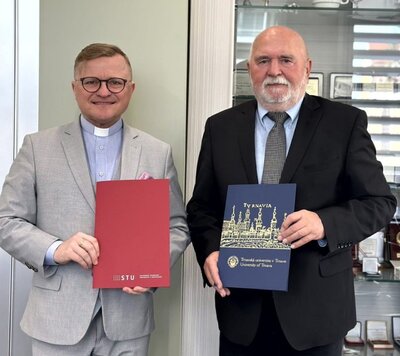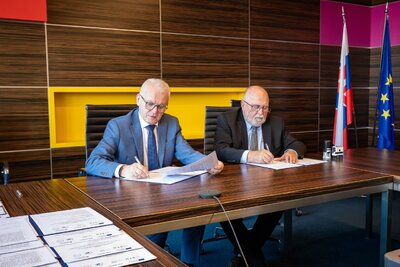Základy jadrovej fyziky a techniky I
doc. Ing. Andrea Šagátová, PhD.
e-mail: andrea.sagatova@stuba.sk
Fakulta elektrotechniky a informatiky, STU Bratislava,
Ústav jadrového a fyzikálneho inžinierstva
Abstract:
This university textbook provides the first part of basic knowledge in nuclear physics and technology. It focuses on the correct understanding of the problematics of radioactivity of atomic nuclei. The textbook describes the structure and forces of atomic nuclei with background in standard model of elementary particles. It discusses the radioactive decay law as well as the activation of atomic nuclei. It offers the overview of stabilisation of radioactive nuclei via radioactive decay, gamma emission or spontaneous fission. At the end of individual chapters, students will find exercises for practicing their correct understanding of the discussed topics: the atomic nuclei, the radioactivity and the radioactive decays. All exercises are based on real examples with actual parameters of nuclei. The correct answers to problems can be found in the rear part of the textbook. The textbook also responds to the recent methods and knowledge in the field of nuclear physics and encourages the students to use the global databases involving latest results of world leading research centres in nuclear physics and technology.
The textbook is primary dedicated to the students of nuclear power engineering and nuclear technology, but it can also enrich students of other study fields of natural science and technology, as well as the employees in the nuclear power engineering with a different background than nuclear.
DOI: 10.61544/IPXZ1813
Literatúra:
[1] G. F. BERTSCH et al., Atom: Encyclopaedia Britanica [Online] [Dátum: 25. 04. 2024.] https://www.britannica.com/science/atom.
[2] National Institute of Standards and Technology (NIST), Fundamental Physical Constants. [Online] [Dátum: 25. 04. 2024.] https://physics.nist.gov/cuu/Constants/index.html.
[3] Collabaoration LHCb, Observation of J/ψp Resonances Consistent with Pentaquark States in Λ_b^0 → J/ψK−p Decays: Physical Review Letters (2015) Zv. PRL 115, s. 072001.
[4] V. M. ABAZOV et al. (D0. Collaboration), Evidence for a B_s^0 π^± State: Physical Review Letters (2016) Zv. 117, s. 022003.
[5] Collaboration ATLAS, Observation of a new particle in the search for the Standard Model Higgs boson with the ATLAS detector at the LHC: Physics Letters (2012) Zv. B 716, s. 1-29.
[6] Collaboration CMS, Observation of a new boson at a mass of 125 GeV with the CMS experiment at the LHC: Physics Latters (2012) Zv. B 716, s. 30-61.
[7] A. SITENKO, V. TARTAKOVSKII., Theory of Nucleus: Nuclear Structure and Nuclear Interaction: Dordrecht: Springer Science and Business Media Dordrecht (1997) ISBN 978-94-010-6436-1.
[8] H. S. HANS, Nuclear Physics: Experimental and Theoretical: New Age International Publishers (2008).
[9] G. FRIEDLANDER, J.W. KENNEDY, E.S. MACIAS, J.M. MILLER, Nuclear and Radiochemistry: John Wiley & Sons (1981) s. 704.
[10] Web Elements, More isotope and NMR data. The Periodic Teble of the Elements. [Online] [Dátum: 25. 04. 2024.] www.webelements.com.
[11] International Atomic Energy Agency, Vienna Austria, IAEA Live Chart of Nuclides. [Online] [Dátum: 25. 04. 2024.] https://www-nds.iaea.org/relnsd/vcharthtml/VChartHTML.html.
[12] National Nuclear Data Center (NNDC) in Brookhaven National Laboratory, NY USA, NuDat 3, Chart of Nuclides. [Online] [Dátum: 08. 05. 2024.] https://www.nndc.bnl.gov/nudat3/.
[13] Národná rada SR, Zákon 87 o radiačnej ochrane a o zmene a doplnení niektorých zákonov (2018).
[14] A. AUGUSTYN, Carbon-14 dating. Encyclopaedia Britannica. [Online] [Dátum: 03. 05. 2024.] https://www.britannica.com/science/carbon-14-dating.
[15] J. C. BRYAN, Dating. Introduction to Nuclear Science 3rd e. Boca Raton : Taylor & Francis Group (2018), s. 30-32.
[16] P. DAMON et al., Radiocarbon dating of the Shroud of Turin. Nature (1989) Zv. 337, s. 611-615.
[17] M AKER et al., First direct neutrino-mass measurement with sub-eV sensitivity. Cornell University Arxiv (2021) [Online] [Dátum: 03. 05 2024.] https://arxiv.org/pdf/2105.08533.
[18] C. L. COWMAN et al., Detection of the free neutrino: a confirmation: Science (1956) Zv.124, č. 3212, s.103.
[19] G. N. FLEROV, K. A. PETRZHAK, Spontaneous Fission of Uranium: Phys. Rev. (1940) Zv. 58, s. 89.
[20] A. BEISER, Úvod do moderní fyziky (Perspectives of Modern Physics) 2. vyd. Praha: Academia, (1978).

